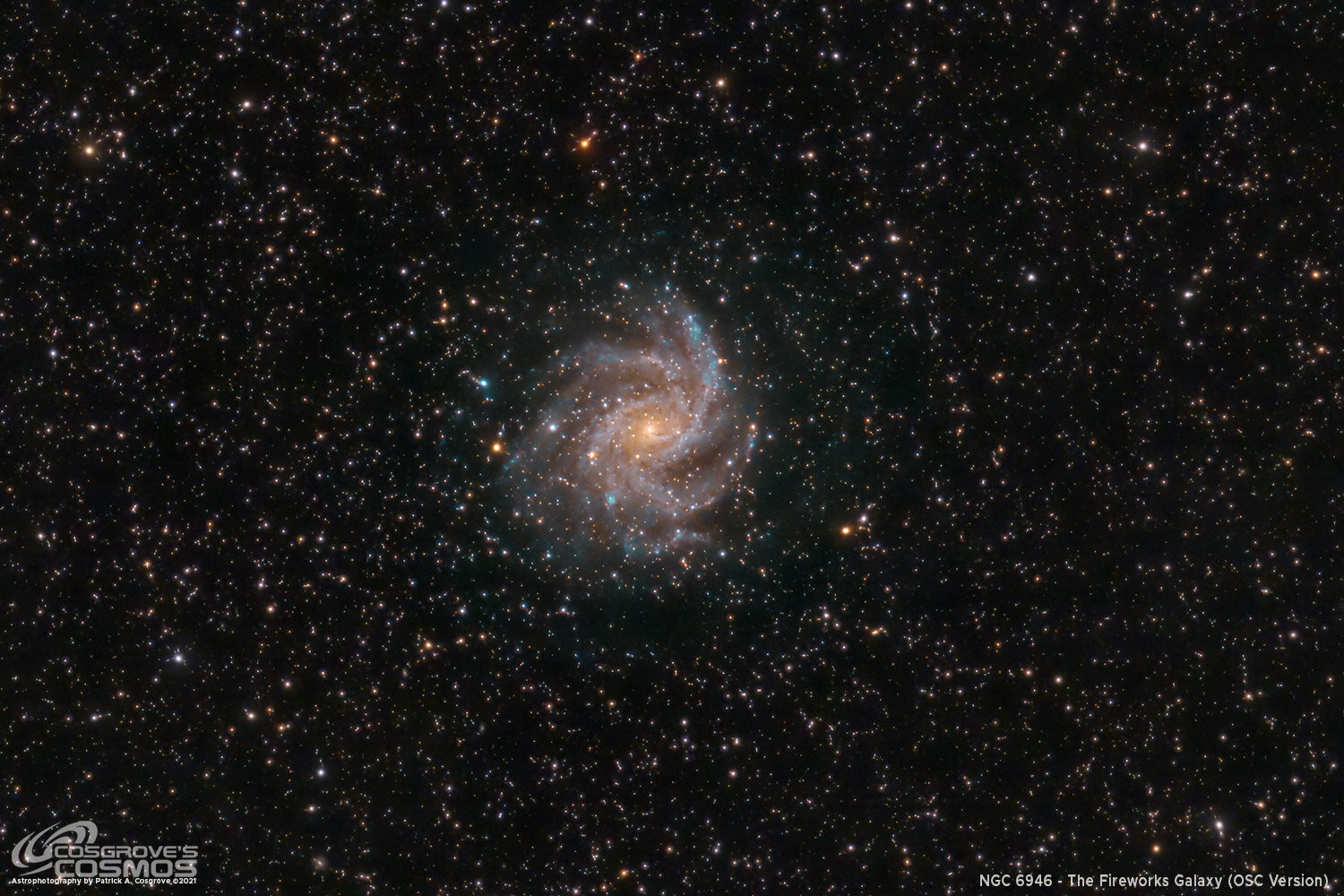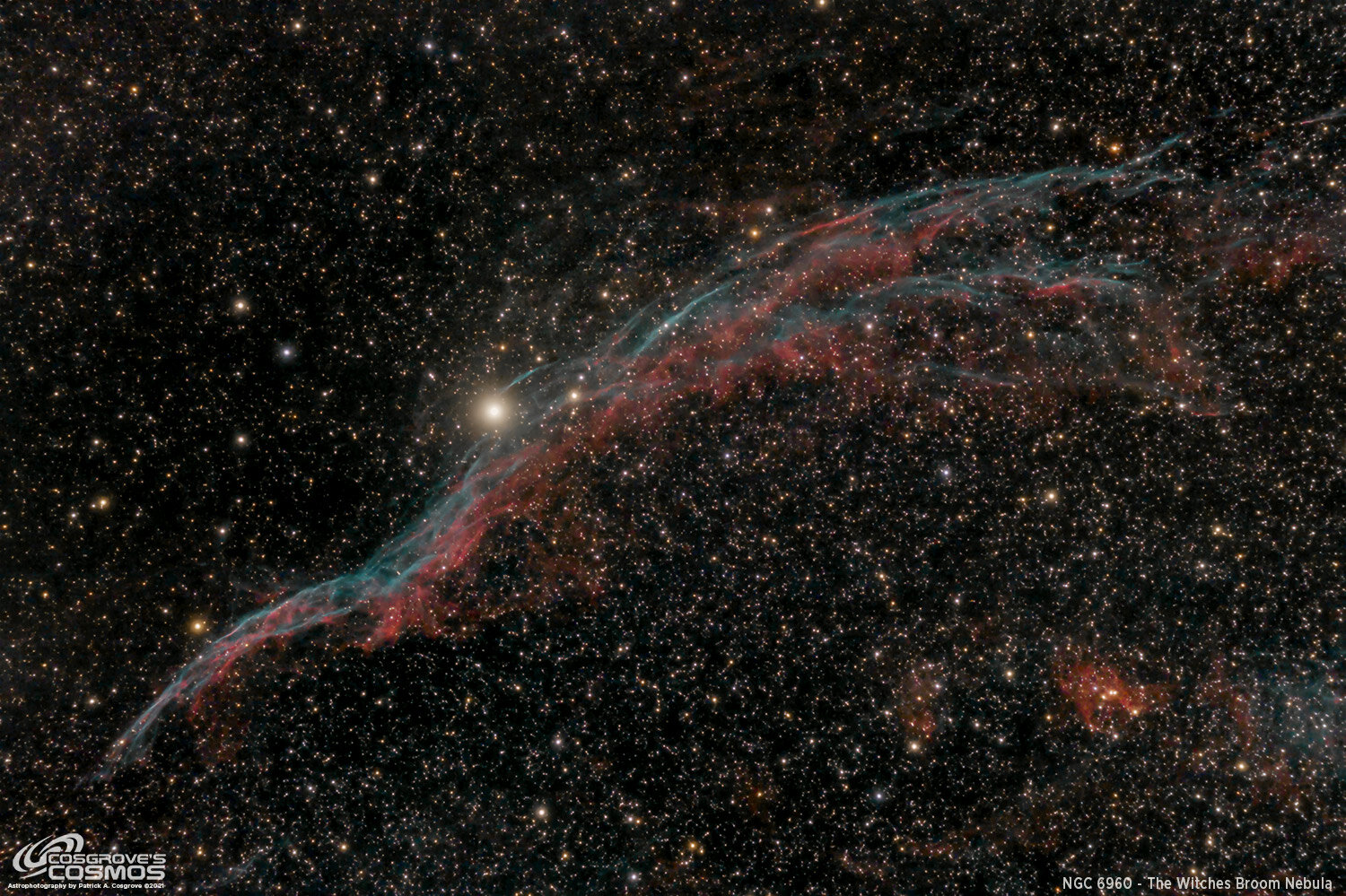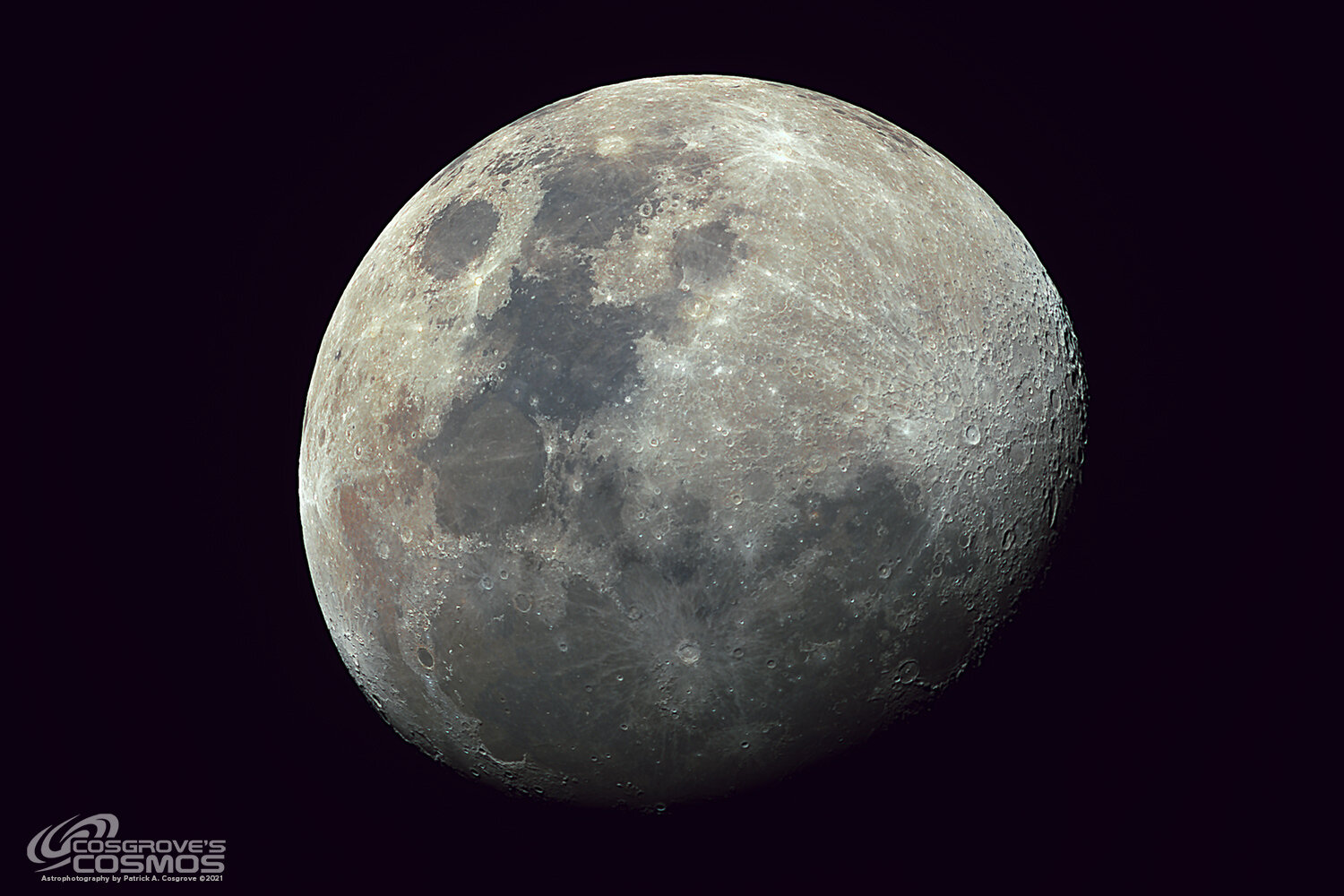Imaging Projects
In this blog, I will share the results of all of my imaging projects. The newest will be at the top and the oldest will be further down the stack. Going back in time here is interesting - some of my early stuff was pretty rough - but I did not see it that way at the time - I was thrilled to get anything back that looked like an image! Hopefully, you will see how my work has progressed with time!

NGC 7293 - The Helix Nebula
NGC 7293, better known as the Helix Nebula, Caldwell 63 and in pop culture as "The Eye of God" or the "Eye of Sauron" - is a planetary nebula located in 655 light years away in the Constellation Aquarius. Planetary Nebulae are formed when an intermediate to low-mass star sheds its outer layers as it reaches the end of its life. The Helix Nebula is one of the closest planetary nebulas to the Earth, is estimated to be about 2.5 light years in diameter.

NGC 7635 - The Bubble Nebula in SHO
NGC7635 - The Bubble Nebula - A narrowband image in the Hubble Palette. Also known as Sharpless 162 and Caldwell 11. The Bubble Nebula can be found in the constellation Cassiopeia, not far from the Open Cluster Messier 52. This area is a rich HII region and the bubble itself was created by stellar winds from a massive hot blue Wolf-Rayet star, AO 20575, that shed its material about 300,000 years ago to form the bubble. This star is 44 times larger than our sun. The Bubble itself is found in a massive molecular cloud that contains the expansion of the bubble and is excited by the same star, causing it to glow as well.

NGC 6946 - The Fireworks Galaxy - Mono LRGB Version
NGC 6946 - The Mono Camera Version.
Known as the Fireworks Galaxy and Caldwell 12, this object is a face-on spiral galaxy on the boundary between Cepheus and Cygnus' constellations. It is located 25.2 Million Light years away and is about 1/3 of our own Milkyway Galaxy size. Another image taken simultaneously was done on a OSC camera so that the two images could be compared.

NGC 6946 - The Fireworks Galaxy - OSC Version
NGC6946 - The OSC Camera Version, Known as the Fireworks Galaxy and Caldwell 12, is a face-on spiral galaxy on the boundary between Cepheus and Cygnus' constellations. It is located 25.2 Million Light years away and is about 1/3 of our own Milkyway Galaxy size. Another image taken simultaneously was done on a mono camera so that the two images could be compared.

Messier 33 - The Triangulum Galaxy
M33, also known as NGC 598, or more commonly known as either the Triangulum Galaxy, is located 2.73 Million Light Years away in the constellation Triangulum. It is the third-largest member of the local group of galaxies which includes M31 the Andromeda Galaxy, and our own Milky Way. It is a spiral form galaxy - once of the first spiral galaxies identified as such back in 1850. It is one of the most distant objects that can be seen with the unaided eye.

NGC 7380 - The Wizard Nebula - in Hubble Palette with Mixed Narrowband and RGB Filters
NGC 7380, Also known as the Wizard Nebula, the Flying Horse Nebula, and Sh2-142, is a gas, dust, and young star region. Located 7200 light-years away in the constellation Cepheus, the Wizard Nebula is tough to see visually but is a favorite imaging target. Most people have no trouble making out the Wizard - wearing a pointed hat, a well-defined nose, and a bright blue star for his eye. He also appears to be wearing a cloak and posing with his hands and fingers outstretched. FIrst complete Narrowband image attempted.

Messier 31 - The Andromeda Galaxy - with Neighbors M32 and M110
This is my second attempt at M31. With a larger focal length, I could not fit the whole galaxy in so I experimented with a framing that showed it’s two neighbors.
Messier 31 is also known as NGC 224 and the Andromeda Galaxy, or as the Andromeda Nebula before we knew what galaxies were. It can be seen by the naked eye in the constellation Andromeda (how appropriate!) and is our closest galactic neighbor located 2.5 Million light Years away. It is estimated that it contains abut one trillion stars - twice that of our own Milky Way.

NGC 7331 and Two Galaxy Groups: The Deer Lick and Stephen's Quintet
Hot off the presses from my photo session last night: NGC 7331 and Two Galaxy Groups: The Deer Lick and Stephen's Quintet.
There are plenty of star clusters out there, but I was interested in shooting a cluster of Galaxies. Stephen's Quintet is high enough this time of year to clears my trees about midnight, so I started to plan on capturing that. I soon realized that I could get two for the price, as The Deer Lick Galaxy group would fit in the same frame if I composed the shot well.

IC 5146 - The Cocoon Nebula
Located 4000 light-years from Earth, IC 5146 - better known as the Cocoon Nebula, is an area of both bright and dark nebulae in the constellation of Cygnus the Swan. The red portion is due to light shining from hydrogen emissions, while the blue portions of the nebula consist of dust reflecting the light young hot blue stars. At the core of the nebula is a bright star that only formed about 100,000 years ago. The shell of gas is about 15 light-years across. Also seen is a dark lane of dust that appears to project from the main nebula towards the west. This dark object is an obscuring cloud of dust known as Barnard 168. To me, it almost looks as if the dark cloud is emanating from and trailing the Crescent Nebula - I like the effect!

NGC 6888 - The Crescent Nebula in Bi-Color
NGC 6888, the Crescent Nebula. Found in the constellation Cygnus the Swan, The Crescent Nebula is an emission nebula located 5,000 light-years away. This was my very first attempt to image with narrowband filters - creating a Bi-Color image with Ha and OIII filters.

NGC 6823 & 6820 - An Open Cluster w/Nebula - Quite Possibly The Worst Image I Have Ever Taken!
Located in the constellation Vulpecula, NGC 6823 is a small open cluster of stars and associated reflection nebula, NGC 6820. The cluster is located about 6000 light-years away and measures about 50 light-years across.
This was one of the worst images I have ever done. Target not carefully chosen, no plan in place, poor shooting conditions. Just a real Bluh Image!

IC 1396 - The Elephant’s Trunk - Now with Added Ha
IC1396 - The Elephant's Trunk Nebula. This is a follow-up project. A few nights after the initial capture effort for this target, I went out and captured Ha data to integrate into the image. This made a massive improvement in the final image.

NGC 6992 - The Veil Nebula
NGC 6992, The Veil nebula, is a collection of hot gas and dust that forms a portion of a supernova remnant. Located 2400 light-years in the constellation of Cygnus, It forms one visible portion of the Cynus Loop - an expanding shockwave bubble from a star that went supernova between 10,000 and 20,000 years ago. The expanding gas from this explosion compressed Hydrogen, Oxygen, and Sodium, causing the formation of shockwaves and causing the colors you see here.

C/2020 F3 Comet Neowise
And now for something completely different. I don’t typically go after Solar System objects, but Comet Neowize blazed onto the scene during the Summer of 2020, and everyone who breathes air was asking me if I was going to shoot the comet. So I decided to make a half-assed effort to do that while I was talking other subs on the other scopes.

Messier 20 - The Trifid Nebula - Mono Camera FIrst Light!
Messier 20 is known by the common name “The Trifid Nebula” and by NGC 6514. It is a star-forming region in the constellation of Sagittarius and is located about 4100 light-years away. This was the very first image on the AP-130 platform and my very first use of a mono camera forming an LRGB image!

NGC 6960 - The Witches Broom Nebula
NGC 6960 - The Witches Boom Nebula
Some time between 10,000 and 20,000 years ago - a star - twenty times more massive than our Sun, went supernova. The exploding outer layer of gas was blown off and has expanded in size ever since. This "ring" is known as the Cygnus Loop or the Veil nebula, and is now over 3 degrees in diameter (6 times bigger than a full Moon!) and is located 2400 light-years away in the constellation Cygnus the swan. Parts of this loop are brighter and have their own designations. NGC 6960 is one of those. It is also known as the Western Veil, The Finger of God, The Lacework Nebula, The Filamentary Nebula, and Caldwell 34. The bright star in the image is 52 Cygni. The colors are from the emission of Hydrogen, Oxygen, and Sodium gas excited by stars.

IC 1396 - The Elephant’s Trunk - in LRGB
IC1396 - The Elephant's Trunk Nebula. Located about 2400 light-years from Earth, in the constellation of Cepheus, IC1396 is a bright region of gas and dust. This area is rich in star formation, with over 10K newly formed blue stars. The prominent dust feature rimmed with glowing emission light is called the Elephant's Trunk Nebula and is designated IC1396A. This was my second attempt at an LRGB image using a Mono camera.

Messier 27 - The Dumbell Nebula
Messier 27 is a planetary nebula in the Constellation Vulpecula and is located about 1200 light-years away. M27 is also known as the “Apple Core” nebula and NGC 6853. It's basically a star the blew up between 10,000 and 14,000 years ago, and we get to see its expanding gas cloud. While this object is small, it is twice the size of the Messier 57 (The Ring Nebula) and allows for a bit more detail to be imaged. This was my second attempt at M27, the first being 2019 when I was first starting. See the comparison between the two.

Messier 57 - The Ring Nebula
Messier 57, also known as NGC 6720, and the “Ring Nebula” is located about 2400 light-years away in the constellation Lyra. M57 is a planetary nebula - an expanding shell of gas and dust expelled by its star in the last stages of its life. The outer shell is expanding at a rate of ~one arcsecond per century. The blue-green color of the central area is due to doubly ionized oxygen. This was my second attempt at M57, the first being 2019 when I was just starting. See the comparison between the two.

The Moon - July 1, 2020
The Moon. Best seen at full size. I took this shot on the night of 7-1-20. I don't normally do Moon or planet imaging, but I was tweaking part of my rig and the Moon as there ... so why not. The Moon was in its Waxing Gibbous phase and had an illumination of 83%. This is the percentage of the Moon illuminated by the Sun. On July 1, the Moon is 10.81 days old.
